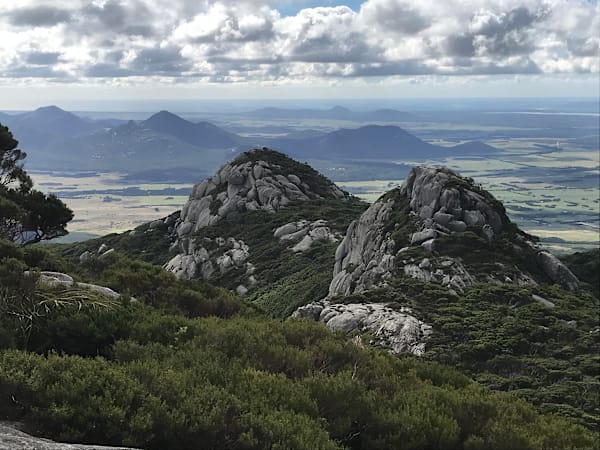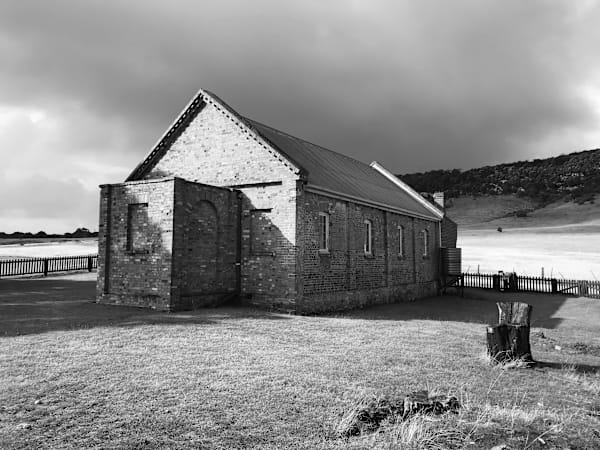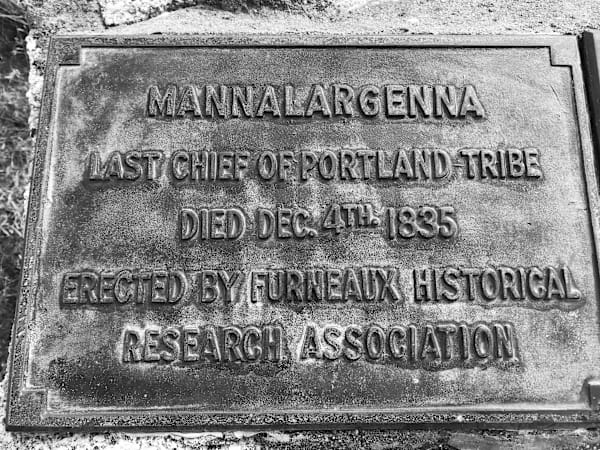“I don’t trust the government – just look at how they are controlling our lives now with the Covid virus outbreak. It’s only going to get worse. Flinders Island is the type of place to get away from all of that control. It’s the type of place to get away from everything. This is the most beautiful place I have ever seen. I could raise the kids here, find some work, live more sustainably off the land, have a good life. I could move here.”
So said the man from Darwin. “How long have you been here?” I asked.
“Four hours.”

We’d just met. We were watched his young children play in the sand as we gazed across the white-capped bay to Mount Killiecrankie. The mountain rises from the sea like a kingdom fortress in a lost story about a faraway land with castles, dragons, kings and queens and myths and legends.
There once was a princess who lived high in a castle …
And that’s the way it is with Flinders Island. One can be here only for four hours, get involved in a fairy tale and want to move here. We had felt exactly the same thing (without the political machinations) when we had arrived a few days earlier and had picked up our rent-a-car – a battered old Toyota Bravo ute that was as rusty as an old gutter, had gone more than 320,000km, but felt perfect for us so we would not stick out like the tourists that we obviously were (there are fewer than a thousand locals on the island).
Within minutes of getting the car we were driving across the rolling hills, down empty roads, looking across to the palace cones and dome-shaped peaks of the Darling Range, and seeing the blue sea hug the white sand beaches below us.

“We could move here,” we had said to ourselves. It’s that sort of place.
The Darwin man pontificated about getting away from it all, about the virus expanding; about darker times ahead. He was a bit of a doomer, but full of enthusiasm for the island. I suspect Flinders Island, like many out-of-the-way places, has a mixture of down-to-earth hardworking locals, day-trippers and fly-ins, lifestylers, escapists, conspiracy theorists, hermits, dropouts, artists and visionaries.
A place for dreamers. My sort of place.
We left the man and had a good hike down Killiecrankie’s beach. I didn’t sense any doom or conspiracy in the air. All I could feel was the wild sense of freedom in the wind and waves, empty beach and views of Nobbys Rock and the fortress towers of Mount Killiecrankie. The only conspiracy that nature exudes is that of the seasons, of wind and rain, of life and death, of shafts of sunlight piercing through clouds and unbridled hope and potential.

. . .
The waves slip and slop and slide on the sandy beach just a breath away from our tent here at Trousers Point. There are no other campers. It was like this 25 years ago and it is like this now – we have, all to ourselves, one of the most idyllic settings and views in the world. For our eyes only, we have the campground, the beach and the dramatic view across the bay to Mt Strzelecki. How lucky we are.
The island’s tallest mountain (782 metres) rises steeply from the eastern coastline into a jumble of turrets and granite domes, looking like a sister kingdom to Killiecrankie, a children’s book illustration of a medieval castle, with dramatic views for kings and queens to command the commons below. We commoners would climb it later today, one step at a time. The weather this morning looks perfect for a hike into this storybook landscape.
I sip my tea and scan the sea, looking south across the blue-green waters to a wild assortment of windswept islands in the distance (Chappell and Badger). Wild especially is Cape Barren Island (known in palawa kani as truwana), whose bare peaks rise imposingly up from the sea like a rival kingdom. These Furneaux Islands (first called tayaritja) appear out of a storybook too – a made-up landscape of shorelines secreted with nautilus shells, beaches strewn with creamy white and burgundy-coloured seashells, of crystal clear ocean waters surrounding dark islands topped by untamed mountains.

The princess awoke one morning to find …
The muse is with me this morning. Just a hint. Just a scent and intuition of something undefinable. The muse reminds me that, although I feel I have all the time in the world to gaze out upon these magic lands and reflect on the last quarter of a century since I was last here, the morning is passing quickly, and what is ahead would soon be behind. I needed to finish my tea and not indulge too long or wonder too much (does time even exist?). For I have to get ready to hike the mountain. So, finish that cup of tea, have a quick wake-up swim in the frigid waters, and get ready to go.
. . .
Climbing Strzelecki is a ritual part of visiting Flinders Island. It gives one an eagle’s eye view of much of the island, setting in context the mellow farmlands, the sleepy old roads crossing hill and dale and the dramatic ranges of the mountains. The climb gives one a 360-degree view of the island’s surrounding ocean waters, which are dotted and dashed with many smaller islands, each with a personality and history of their own. The mountain provides one with views of empty beaches, broad estuaries and bays, grazing cattle and sheep, and romantic empty dirt roads leading to lone houses on windy hillsides. Listen closely and you will hear the lazy sighing of currawongs in the trees or the honking of Cape Barren geese in the paddocks.
The climb up Strzelecki also invites one into the secretive Eden of the island – sweetly scented rainforests, unexplored granite canyons and steep cliffs, birdsong-fluttered forests and secluded ferny glens giggling with water trickling down smooth stone chutes into clear pools.

Yes, here is a storybook background to hike into, wander through and pick up the essence of another world, an island world complete unto itself, an island off an island, far from the madding crowd.
. . .
We slept well in our tent that night, bathed in the quietness of the waves lapping against the coast below us and the silence of the stars above. The silence of the earth always seems so profound when one is out camping, after the relentless input of noise we are so often immersed in our daily lives. We don’t realize how noisy our lives are until we are out in the natural world. (Numerous studies have linked noise pollution to increased anxiety, depression, high blood pressure, heart disease, stroke and other issues.)
A wallaby stirs in the bush. The waves slosh. A brushstroke of wind sifts through the drooping she-oaks that surrounded us. I listen to this silence and fall asleep at peace.
A light in the north-east tower of the mountain’s castle glows as the princess …

The weather for the next few days of exploring Flinders was squally, in and out of rain showers, bright sunshine, wild winds, crystal clear coastal vistas looking across white-capped waves and then more showers and more untamed wind. But I wouldn’t have changed the weather. Its brashness shapes the island experience. If you want warm sunny, windless days, go to Bali. Or Darwin.
. . .
Over the next week we drove up and down the length (about 60km) of the island’s empty roads and found empty beaches and walked empty tracks. We saw only a handful of tourists in Whitemark. We explored the unmissable museum at Emita and learned about colonial and Aboriginal histories. The First Tasmanians came here at least 40,000 years ago, migrating from the mainland across land bridges. In 1798 the “Furneaux Islands” around tayaritja were charted by Matthew Flinders; later James Cook named the “great island” after Flinders.
For days we absorbed the history. We dodged showers and walked wild beaches. We climbed over lichen-covered orange rocks and breathed in the fresh air of this island paradise. We listened to the squawk and squealing of sea birds. We had a beer for lunch. It was hard not to smile.
Even in paradise, however, there is sadness.

At Wyballena, we visited the refurbished 1833 Aboriginal chapel and cemetery, both of which seemed lonely and haunted by sadness. We walked across the old settlement where Tasmanian aborigines had been taken to in the 1830s. There were no remains of the failed village that we could see. The gravesites for the hundreds of aborigines who died here (due to influenza, pneumonia and loneliness), once marked, were now invisible below the paddocks.
The gravesite for the aboriginal community’s leader, Mannalargenna, was in a small fenced-off cemetery, but his grave seemed out of place, solitary and forlorn as it sat among the graves of non-aboriginals.
We walked from the cemetery across the windy fields to watch the ocean waves batter Settlement Beach. We pondered on the stark views of a rainy seascape, cold and grey, similar to what the misplaced aboriginal community would have seen here as they gathered on the coast, aching to be returned to their homelands.

. . .
As we waited at the airport to fly back to the big island of lutruwita (Tasmania), less than an hour away, a flight arrived and I watched the passengers – local families, farmers, fisherman and visitors. There was a Byron Bay-looking woman with dolphin tattoos, waist-length braided hair and a long, florid dress hanging above Blundstone boots; there was a neatly pressed government man wearing a Kathmandu down jacket and holding a laptop and a suit bag; there was a fit young man with a fedora hat, old backpack and worn hiking boots – my doppelganger of years ago. I looked up at the mountains in the distance.
The princess with long golden hair was returning to her castle after …
There were dreamers, outcasts, tourists, doomers and optimists. I gazed at them and I felt right at home. And I thought to myself: I could move here

Don Defenderfer is a native of San Francisco who once went on a holiday to Alaska where he met an Australian who told him to visit Tasmania. So he did, and while here he met a woman. That was 30 years ago. He was state coordinator for Landcare for many years, a job that allowed him to be inspired by not only the beauty of the Tasmanian landscape but by the many people that are trying to repair and renew it. He has a Masters Degree in Social Ecology and a Bachelor of Environmental Studies with a minor in writing. He has published three volumes of poetry, and his work has appeared in newspapers and periodicals, including The New York Times and The Australian.







